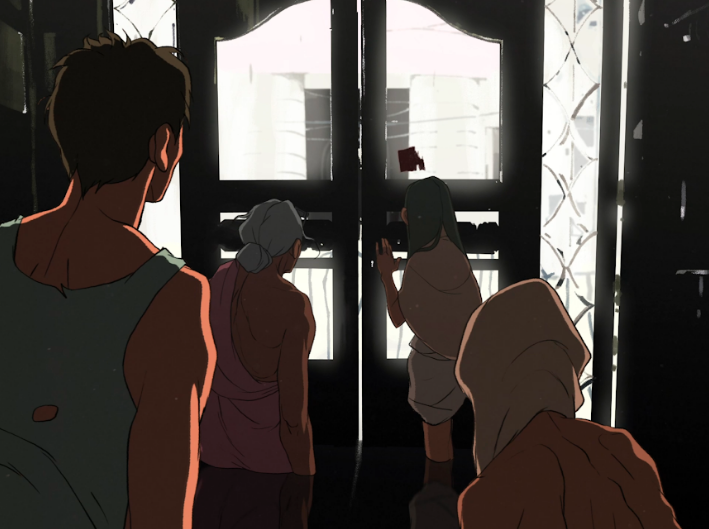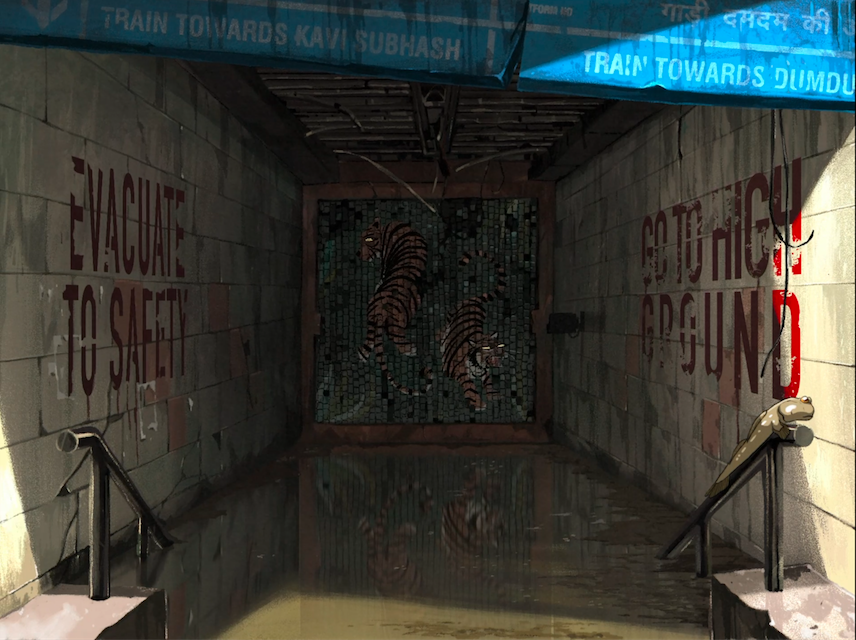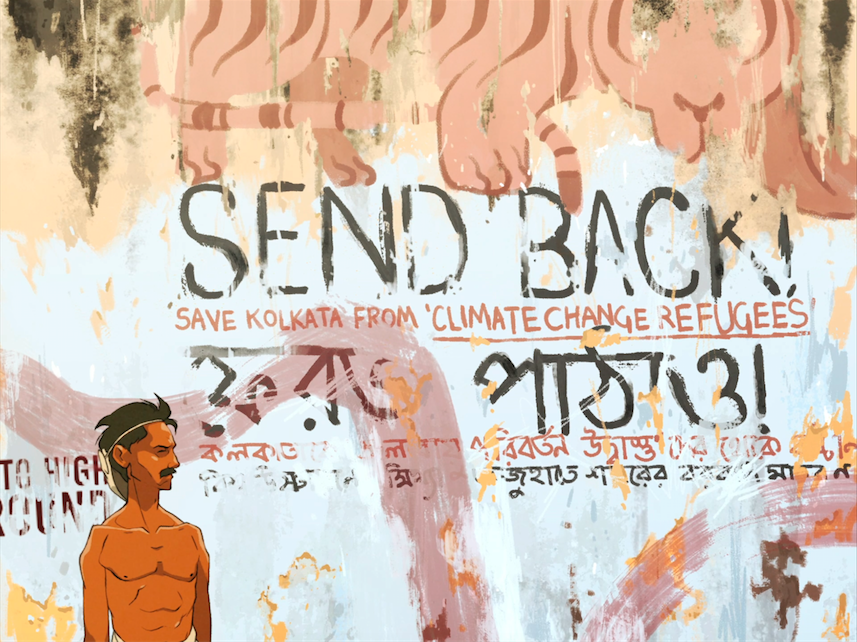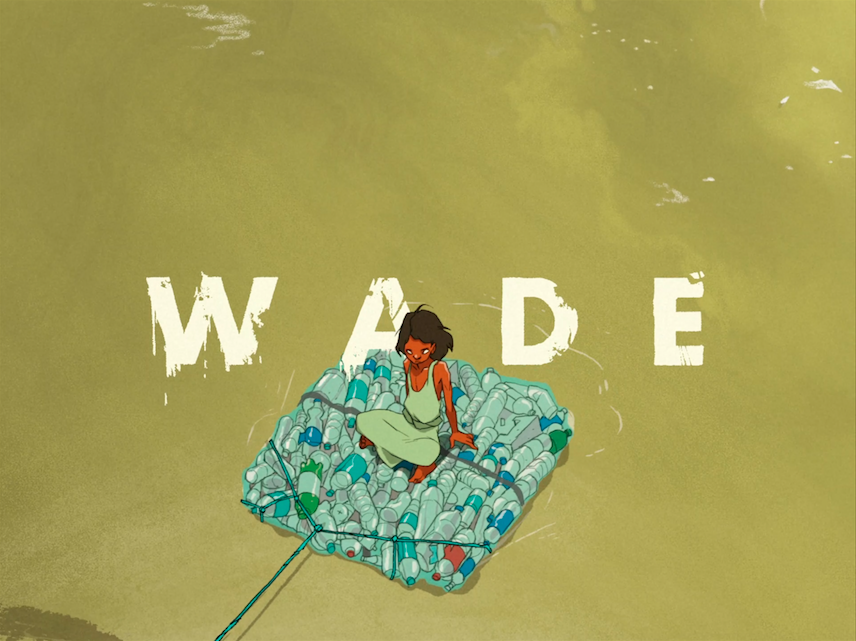Climate change remains such a powerful concern for the world – and in a brand-new futuristic animated short called WADE, film-makers Upamanyu Bhattacharyya and Kalp Sanghvi highlight the key problems in India, as a family are faced with man-eating tigers near their homestead who take no prisoners.
A celebration of classic Indian art and local film-making, WADE is generating a lot of attention at the present time.
Film And TV Now spoke with the film-makers as they reflected on the key issues and messages they hope the film will continue to provoke around the world.

The film focuses on an imagined future and what could happen if the sea levels continue to rise. It’s a strange time at present, not just with COVID-19, but also in terms of how more third world cultures need the first world infrastructure to develop and improve to benefit the populace. When you reflect on your own status quo, what things concern you?
What this pandemic especially has laid bare is the fact that the privileged everywhere always manage to find a way out. Even in the most privileged of nations, the main brunt of every crisis falls upon the less privileged.
Within the universe of ‘Wade’, it jumps out that the people who contributed the least to climate change (the people who consume the least) will likely end up being the most affected by displacement, discrimination and a lack of resources to carry on. Beyond the tigers, this film really wants to ask you what your life looks like on the other side of climate change. Are you going to be forced to leave your home?
If you are, do you think you’ll be welcome when you arrive in a safer city?
The film relies more on visual interpretation over dialogue and characters’ expressions are the driving force of the narrative. What was the foundation for the visual style of the short?
Silent films always have a separate allure, it’s a very primal form which is universal from the get go. We had the uphill task of taking Kolkata to the world: Kolkata isn’t New York, it’s not instantly familiar to film audiences. But we still had to make the context instantly connect so that the audience can feel the plausibility of the effects of climate change.
With no language, it becomes that much more accessible to global audiences. What’s more, in a city infested with tigers, it’s very likely you’d try to stay as quiet as possible. When you’re afraid, when you’re nervous, you keep shut. There wasn’t anything to be gained in adding a character shouting ‘Look out!’ and so on.
We sense a touch of Manga and AKIRA in influence for this short. What were your visual points of reference when conceiving WADE?
Our main points of reference were very much looking homewards, to the folk art of Bengal and Kolkata. The wide elongated eyes with tiny pupils is a mainstay of Kalighat paintings, and when we tried them for our characters, it added to the permanent state of nervousness that we wanted from our characters.
Besides that, there was a lot of attention paid to getting the details of the humans and the city right, and we sketched outdoors a lot for that, took a huge number of reference photographs and tried to make it as immersive as possible.
Tell us about your production team.
Ghost Animation, our Kolkata-based collective, kind of formed around the production of ‘Wade’ in some ways. Besides the two co-directors, we’d bring in animators on a weekly basis usually, depending on availability. Even some of our main background artists were summer hires. Overall, about 30 artists worked on ‘Wade’ but at various points, hardly ever simultaneously.

At the end of the film, we see the credit ‘GHOST ANIMATION’, which is your production company. What are your immediate plans?
We recently finished four shorts, including ‘Wade’, and are in the process of finishing a few more which we hope to package together as an anthology of Indian animation. We also have a mini series, ‘Rajbari’ and a feature length film, ‘Threads’ in the works.
It certainly has a few shocks within and reminds one of water-based films like JAWS and PIRANHA. Were these another influence?
‘Wade’ owes a lot to good horror films, of course. ‘Jaws’ is definitely genre defining for the man-vs-nature trope, and from the very first poster we heard comparisons to ‘Life of Pi’ as well. We looked at a lot of examples where the edit suddenly picks up steam after lulling you into a state of ease. ‘Wade’ uses that twice, for which directors like Kurosawa or more recently Bong Joon Ho served as inspirations.

Tell us about the sound design of the film, which is part of its effectiveness.
Troy Vasanth was behind the sound and music. He’s a Mumbai based animator and music producer. It’s a little tricky to speak in terms that doesn’t frustrate a musician, but we did our best to map out our mood vs time graph for him. He ended up breaking the runtime into themes, each distinct in which buttons they were pressing for the audience.
In the opening, for example, there are very faint ‘ghost sounds’ of the spaces represented in the montage of city-scapes, sounds you’d have heard if you were there in the past (or technically the present). He also used a lot of audio cues to remind the audience that an idea or motif is recurring.
The short would certainly be interesting if expanded into a feature-length version. Are there plans to do this?
That’d definitely be fun! We have heard a lot of interest in a feature length story set in the universe of ‘Wade’. For now, we’re exploring the histories of the space (which still comes under the category of future fiction) in an anthology of comic short stories.
How has the lockdown and coronavirus crisis affected you locally?
Yes, it definitely has. The lockdown and the recent super cyclone Amphan has had a major impact on Kolkata and the sundarban Delta. Besides making the imagery of an empty flooded city come true a touch too soon, it’s thrown that divide between the classes into very stark relief.
Finally, what are you most proud of about the short film?
We’re really glad that an animated short film from our part of the world about climate change is finding acceptance globally. We also learnt a lot about the medium while working on the film, in terms of both technique and language, and that should be very helpful moving forwards!





























